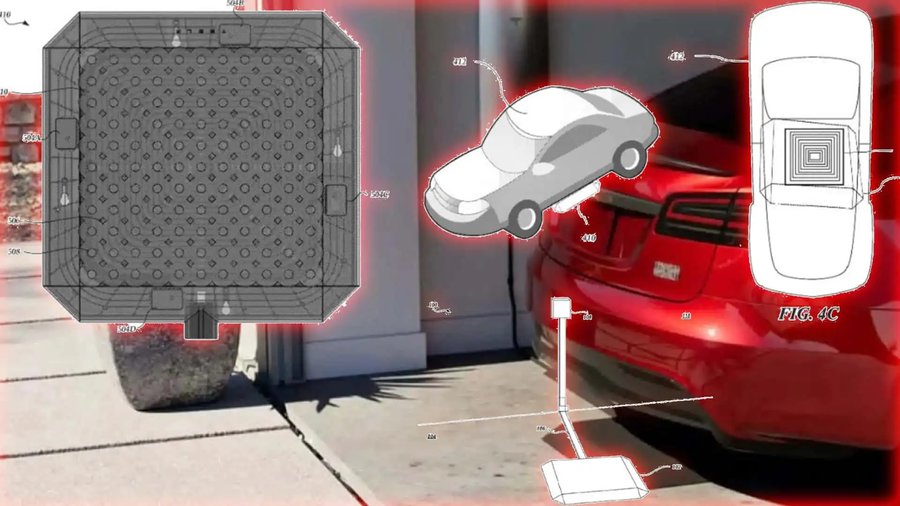Tesla Wireless Car Charging Pad Revealed In Patent Drawings

Tesla files four different patents for an EV wireless charging pad. It teased a home wireless charger last year but it never confirmed any plans to offer it. It could be used to automatically charge the upcoming self-driving Tesla Robotaxi.
Tesla has never officially announced plans to launch a wireless charging solution for its cars. Its idea of how to free owners from having to manually plug in at home was a robotic arm that did it for you, but that never materialized. However, after teasing a photo of a wireless charging pad in a home garage last year, it looks like Tesla might soon offer this solution to consumers.
As spotted by Electrek, the manufacturer has submitted four patent applications for a wireless charger that looks very similar to the one it teased in 2023. Patent applications don’t automatically mean a company will launch a certain product, but they give a strong indication as to the intention to launch it.
Another reason why we believe Tesla is planning to launch this wireless charger is its 2023 acquisition of Wiferion, a company specializing in wireless power delivery systems. Tesla quickly sold Wiferion right after buying the company, but it hired its engineers to presumably work on its own wireless charging solution.
Even though it teased the wireless charger in what was made to look like a home garage with a Model S Plaid parked above it, Tesla could have other plans for it. Inductive charging that doesn’t require physically plugging in would be ideal for Tesla’s upcoming self-driving Robotaxi, which will be revealed to the public on October 10.
We could also see a wireless charger revealed alongside the autonomous vehicle since it would allow the vehicle to simply park on top of the induction pad and not require a charging cable to be plugged in, thus making charging completely autonomous. This is certainly a simpler solution than having a robotic arm charger, although it does have its limitations.
Still, wireless charging can’t come close to matching the charging speed of a wired connection. Most wireless chargers today top out at around 20 kW of power, so charging a Tesla would take far longer than plugging it into a DC fast charger that can supply up to 250 kW.
However, the fact that Tesla applied for the patents, which have to do with reducing current ground leakage, charging circuit topology and temperature sensors, gives a strong indication that the manufacturer is at least thinking about some sort of wireless charger.
Related News
